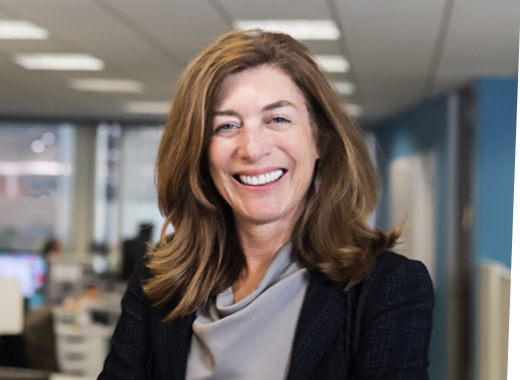Resilience and the Future of Work: Highlights from Web Summit 2022
Jan Bruce, CEO and Co-founder of meQuilibrium, shares insights on the evolving role of resilience in the workplace, as highlighted in this year's Web Summit conference.
Leading Through Unrelenting Uncertainty - Webinar on May 22 Register Now
Jan Bruce, CEO and Co-founder of meQuilibrium, shares insights on the evolving role of resilience in the workplace, as highlighted in this year's Web Summit conference.
I had the opportunity to speak at this year’s annual Web Summit in Lisbon, Portugal. Web Summit is the one of the biggest global tech conferences, attracting over 70,000 of the best and brightest in tech from 160 countries to network, learn from each other, and explore the question: Where to next?
The themes of Web Summit are well aligned with meQ. I had a powerful conversation with Rosemarie Ryan, a marketing world luminary, about how meQ began, how we’ve helped pioneer resilience, and where our growing organization is going.
When meQ began, the market had a need to solve burnout, beyond the buzzwords. Burnout was and still is a pervasive issue that surpasses stress to the point of numbness and health challenges. People dealing with difficult and changing work situations needed new ways of managing their mindset.
Since that time, the need for workforce resilience has only intensified. According to one report, 59% of American workers are experiencing burnout this year, up from 52% in 2021. With risk increasing rather than abating, we can’t afford to ignore mental well-being in work or life.
When humans come together and thrive in the face of change and uncertainty, it signals a resilient culture. Over 10 years ago, meQ began to study why and how resilient teams could produce better results for themselves and their company. Since then, we’ve partnered with some of the largest global employers like JPMorgan Chase, IBM, Goldman Sachs, and PepsiCo to help them build more resilient workforces.
In that decade, what’s changed? Work is no longer a place where you simply clock in, do your time, and go home. Creative, innovative cultures, and people are looking for more than just salary. They are working with purpose. According to McKinsey, two-thirds of women under 30 say they would be more interested in advancing if they saw senior leaders with the work-life balance they want.
The role of the CHRO has moved from being a person who just takes care of talent and the status quo to driving culture, attracting talent the company needs in order to grow, and helping the entire organization rise collectively to become a force for good.
Organizations with a growth mindset help their people cope with uncertainty, adapt, and accelerate in the face of adversity. Because the dust will never settle. And it’s been proven that companies with a resilient mindset who innovated, developed a new product, or went on to new markets during economic turmoil did 20% better than those who relied on a defensive crouch. When the economies improved, those same resilient companies outperformed their peers by 50%. Investing in a culture of growth and mental well-being made all the difference.
Today’s worker seeks a deeper relationship with their company, and if companies invest in developing resilience in their workforce, that relationship is mutually beneficial. When we rise together, to become a force for good, there’s no end to what we can do.
I addressed many of these topics at meQ’s recent Resilience 2022 Conference. All sessions are available to watch on demand, including my keynote, Being a Force for Growth…and a Force for Good.

At the height of her career, Jan Bruce realized that she was being pulled in so many directions – trying hard to balance being an executive, wife, and mother – and not feeling like she was performing optimally in any role. Instead of being excited and motivated, she was stressed out and approaching burnout. Jan knew she was not alone in feeling this way and recognized that stress was a big risk to both health and performance for much of the workforce. She had an epiphany: successful performance and behavior are influenced by the way we think, and lasting balance is only possible through self-awareness, self-management, critical thinking, and an overall commitment to our well-being. This is what led to meQuilibrium's inception in 2011. Built upon proprietary, clinically validated science in the field of resilience, meQuilibrium is the first holistic SaaS-based cognitive performance platform built for organizations as they navigate the need for more innovative, agile workforces and integrated HR strategies that support the overall experience and well-being of their employees. The company's digital, interactive programs help employees and companies achieve measurable, deep-rooted results in well-being and performance by giving organizations the ability to predict problems and prescribe personalized solutions at global scale.